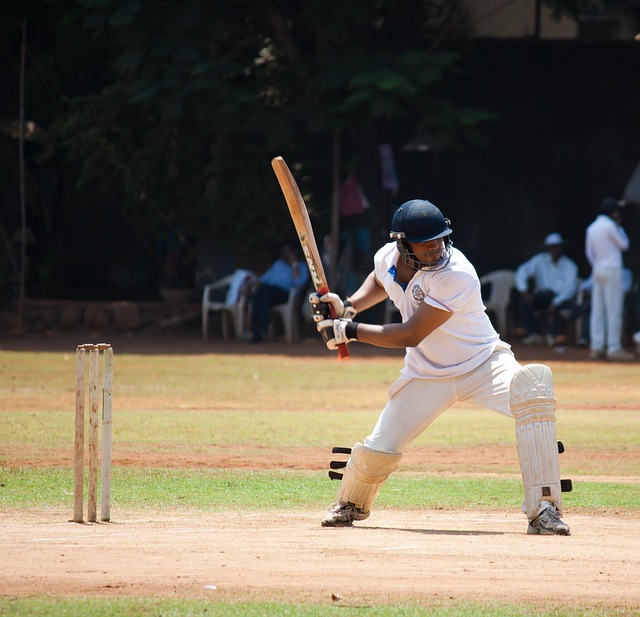
The Bangladesh national cricket team's ODI success stems from innovative bowling strategies. Their blend of pace and spin, coupled with rhythmic variations, disrupts opponents across diverse batting formations. This adaptability, honed through rigorous practice and advanced analytics, is anchored by strategic planning and tournament-specific preparation. Key bowlers like Tamim Iqbal and Mosaddek Hossain exhibit mental resilience, showcasing tactical flexibility that has led to notable series victories.
Discover the tactical secrets behind the success of the Bangladesh national cricket team’s bowlers in One Day International (ODI) matches. From spin and pace balance to adaptability and mental resilience, explore the key strategies that have elevated their performance. Learn how these tactics enable the Bangladeshis to outwit opposition batters and claim significant victories. Uncover the elements that contribute to their consistency and effectiveness on the international stage.
- Understanding Bangladesh's Bowling Strategy
- Key Techniques of Successful Bowlers
- Spin and Pace Balance in ODI Matches
- Adaptability: A Cornerstone of Success
- Mental Resilience and Decision Making
Understanding Bangladesh's Bowling Strategy

The Bangladesh national cricket team has developed unique bowling strategies that have proven effective in One Day International (ODI) matches, often surprising their opponents. Their approach is characterized by a blend of pace and spin, with a strong focus on varying the rhythm and pace to disrupt batting orders. The team’s bowlers are adept at exploiting subtle changes in the pitch conditions, utilizing both short-pitched deliveries and subtle variations to create movement in the air, which can be particularly challenging for batsmen to predict.
This strategic depth is evident in their ability to adapt to different batting formations. Whether facing a traditional top-order line-up or a more aggressive, power-hitting side, Bangladeshi bowlers have shown versatility. They employ precise line and length bowling to contain runs during the middle overs while also providing the occasional dramatic moment with a deadly yorker or bouncer. The success of these tactics has been evident in numerous test match strategies explained, where Bangladesh’s bowling unit has played a pivotal role in securing victories. To gain further insights, interested fans can always give us a call at cricket match analysis software for detailed reviews and discussions on the art of bowling.
Key Techniques of Successful Bowlers

The Bangladesh national cricket team has consistently produced some of the most skilled bowlers in ODI matches, showcasing unique and effective tactics on the global stage. Their success lies in mastering several key techniques that often come as a surprise to opponents. Fast bowlers, for instance, have been known to combine high-speed deliveries with precise line and length, making it challenging for batsmen to predict their attack. This precision bowling is often coupled with clever variations in pace and flight, keeping the batters off-balance.
Cricket coaching clinics in Dhaka have played a pivotal role in honing these skills, emphasizing the importance of rigorous practice and strategic planning. By analysing historical cricket matches in Bangladesh and using cricket analytics and data interpretation, bowlers have developed their craft. The team’s success is a testament to how modern cricket strategies can be adapted and tailored to suit individual strengths. Even when visiting us at the International Cricket Council (ICC) regulations anytime, players continue to innovate, ensuring that they stay ahead of the game.
Spin and Pace Balance in ODI Matches

The Bangladesh national cricket team has consistently shown remarkable skill and strategy on the ODI (One Day International) stage, often surprising opponents with their unique bowling techniques. One key aspect of their success is the balance between spin and pace bowlers in their lineup. This strategic mix allows them to adapt to various playing conditions, a vital factor in the unpredictable nature of ODI cricket.
Cricket coaching books recommended for both amateurs and professionals highlight the importance of such versatility. The team’s bowlers often alternate between precise spin deliveries that trap batters on the crease and fast, swinging paces that create movement through the air, challenging even the most seasoned batsmen. This dynamic approach is further enhanced by using advanced cricket match analysis software to study opponent strategies, ensuring they stay ahead of the curve. Additionally, by understanding different tournament formats and rules, such as those in various T20 competitions, these bowlers can fine-tune their skills for specific game requirements, giving them an edge over competitors. For expert advice and the latest gear, give us a call at cricket gear reviews for amateurs; it’s a valuable resource for any aspiring bowler looking to improve their spin and pace combinations.
Adaptability: A Cornerstone of Success

Adaptability is a cornerstone of success for the Bangladesh national cricket team in One-Day International (ODI) matches. In the dynamic world of ODI cricket, where every match has its own unique set of conditions and challenges, the ability to adjust strategies on the fly can make all the difference. Bangladeshi bowlers have masterfully demonstrated this trait, often changing their approach based on factors like pitch reports, weather conditions, and opposition batting lineups.
This adaptability is not just about tactical adjustments; it also encompasses the team’s ability to stay composed under pressure and utilize their full repertoire of bowling skills. Whether it’s switching between deliveries with different shapes or speeds, or adjusting their line and length based on the batter’s strengths and weaknesses, Bangladeshi bowlers are adept at reading the situation and executing their plans effectively. By constantly evolving their strategies, they keep opposing batsmen guessing, which is a key advantage in cricket tournament formats and rules, as it helps them maintain a competitive edge throughout the match. To learn more about cricket equipment for all levels and one-day international cricket rules, visit us at one-day international cricket rules anytime.
Mental Resilience and Decision Making

The Bangladesh national cricket team’s bowlers have consistently displayed remarkable mental resilience and astute decision-making on the ODI stage, becoming a key factor in their recent successes. This aspect is often overlooked but plays a pivotal role in high-pressure matches. Fast bowling legends like Tamim Iqbal and Mosaddek Hossain have shown the ability to remain composed under intense scrutiny, adapting their strategies mid-game with precision. They understand that consistent performance and quick thinking are vital, especially against well-drilled opposition.
Mental fortitude allows these bowlers to make crucial decisions regarding pace, length, and variations in delivery, keeping batters guessing. For instance, the team’s success has been closely tied to their ability to mix short, sharp deliveries with slower, more subtle changes. This tactical flexibility is evident when observing their performances against various batting styles. The Bangladesh bowlers’ mental resilience and smart decision-making have not only contributed to series victories but also inspired local club cricket organizations to encourage similar focus and skill development among aspiring players, giving us a call for further insights into the art of bowling.
The tactics employed by successful Bangladeshi bowlers in ODIs have been a key factor in the Bangladesh national cricket team’s rising performance. By understanding their unique approach, which combines strategic spin and pace bowling, along with adaptability and mental resilience, we can appreciate the evolution of this dynamic team. These techniques not only help them navigate diverse playing conditions but also pose challenges to opposition batters, making them a formidable force on the international stage.






